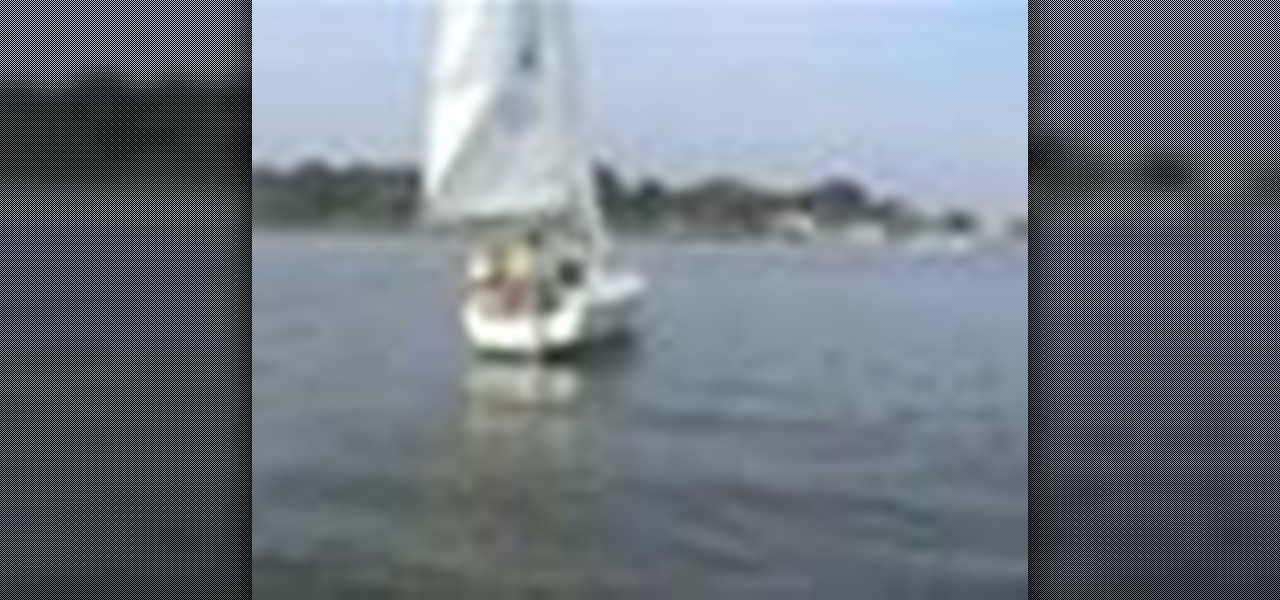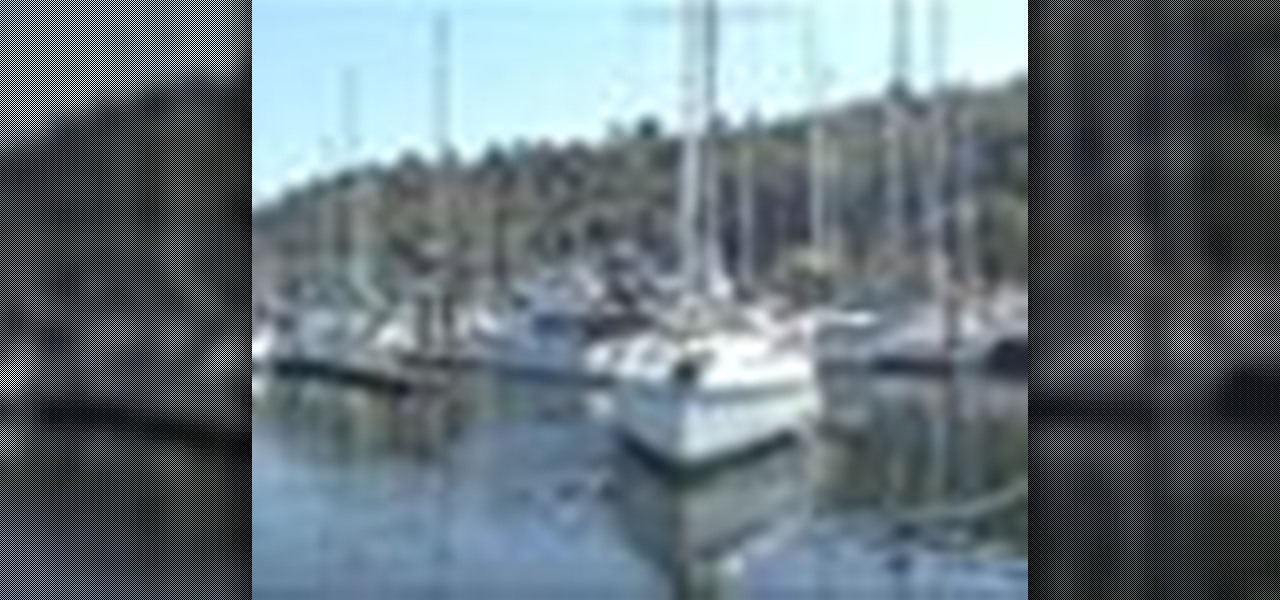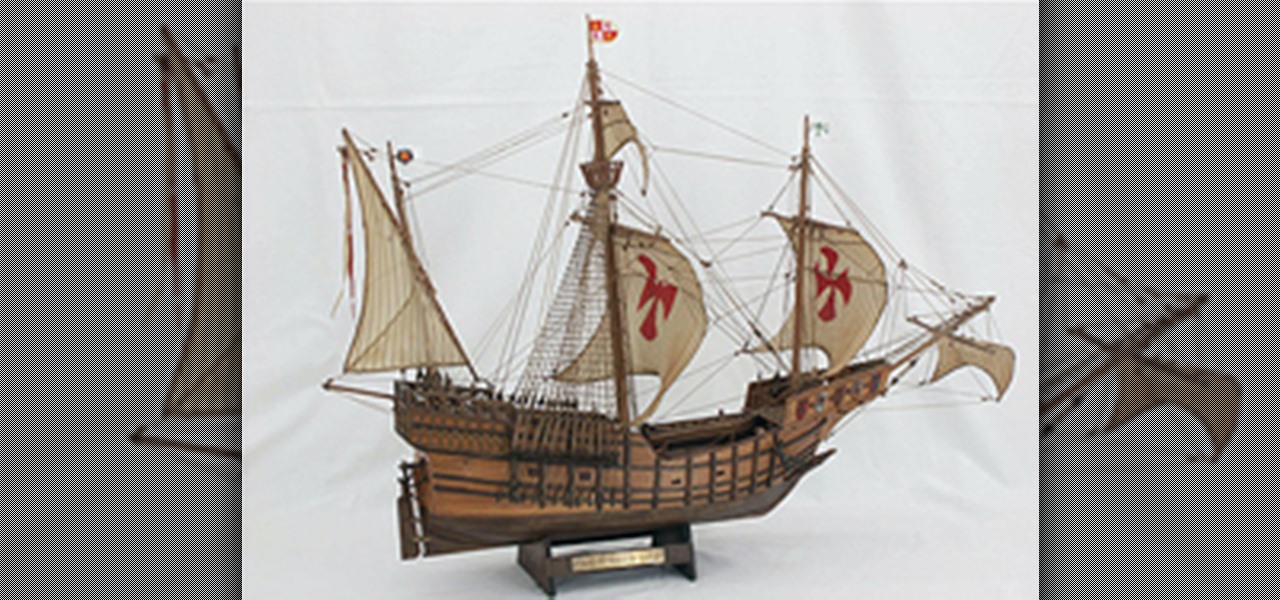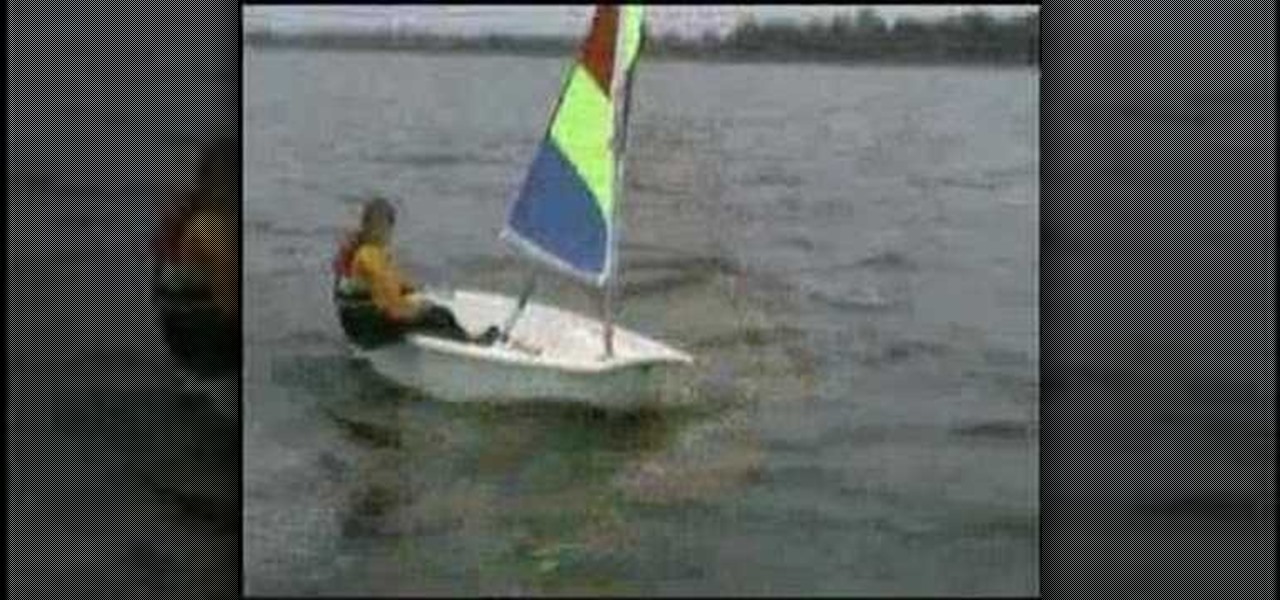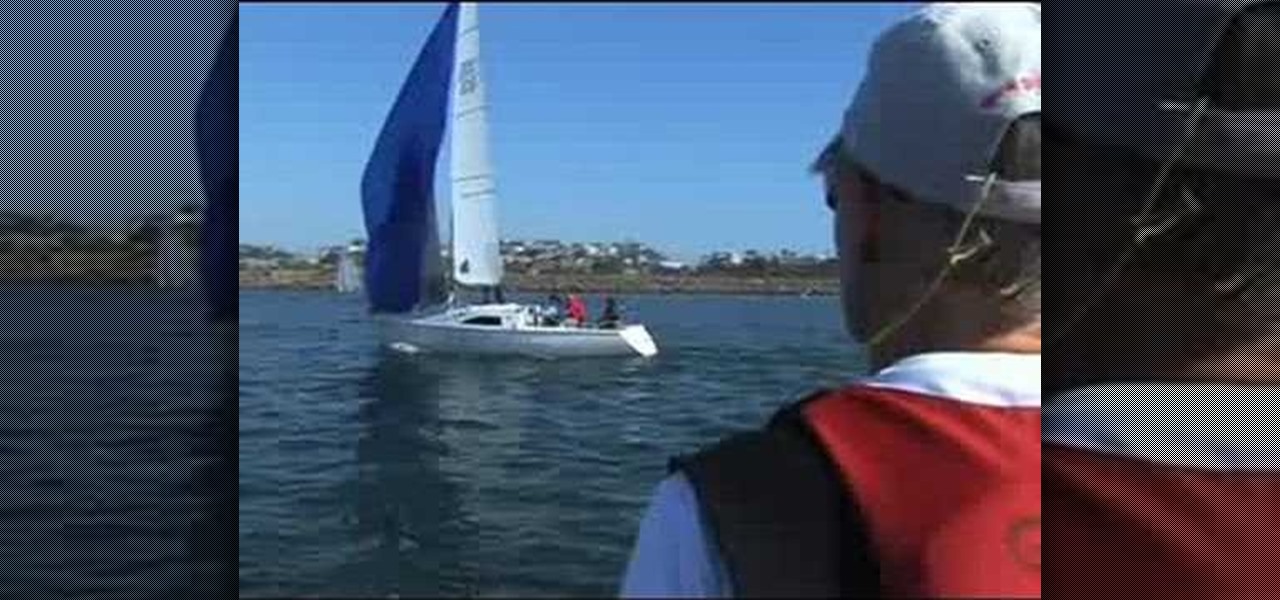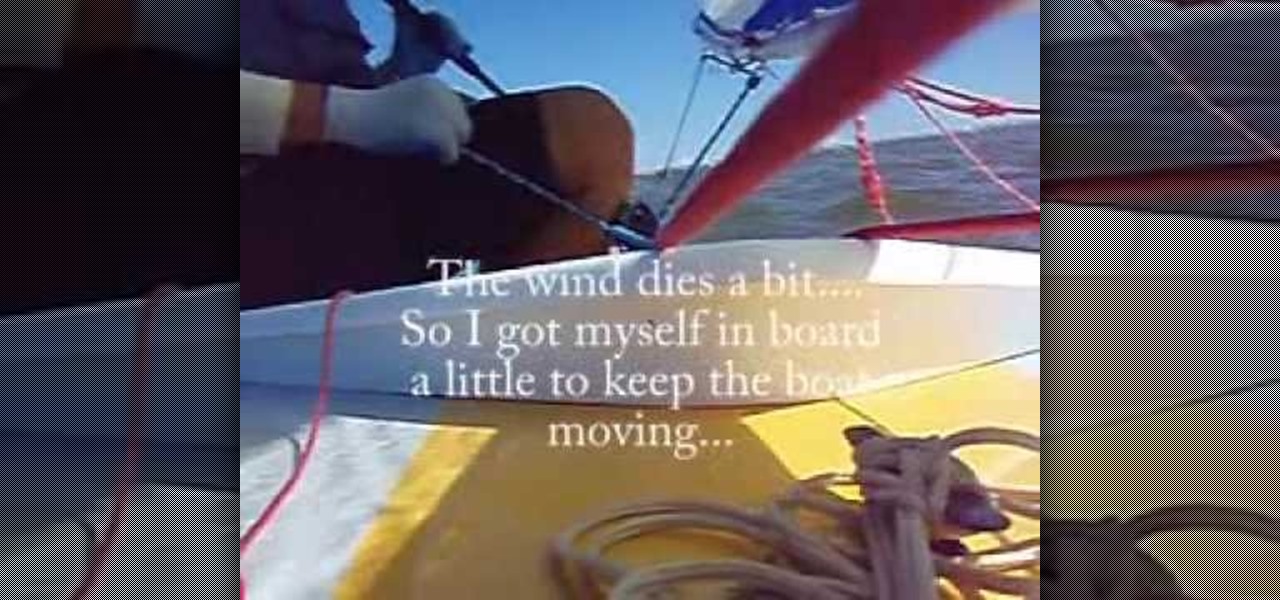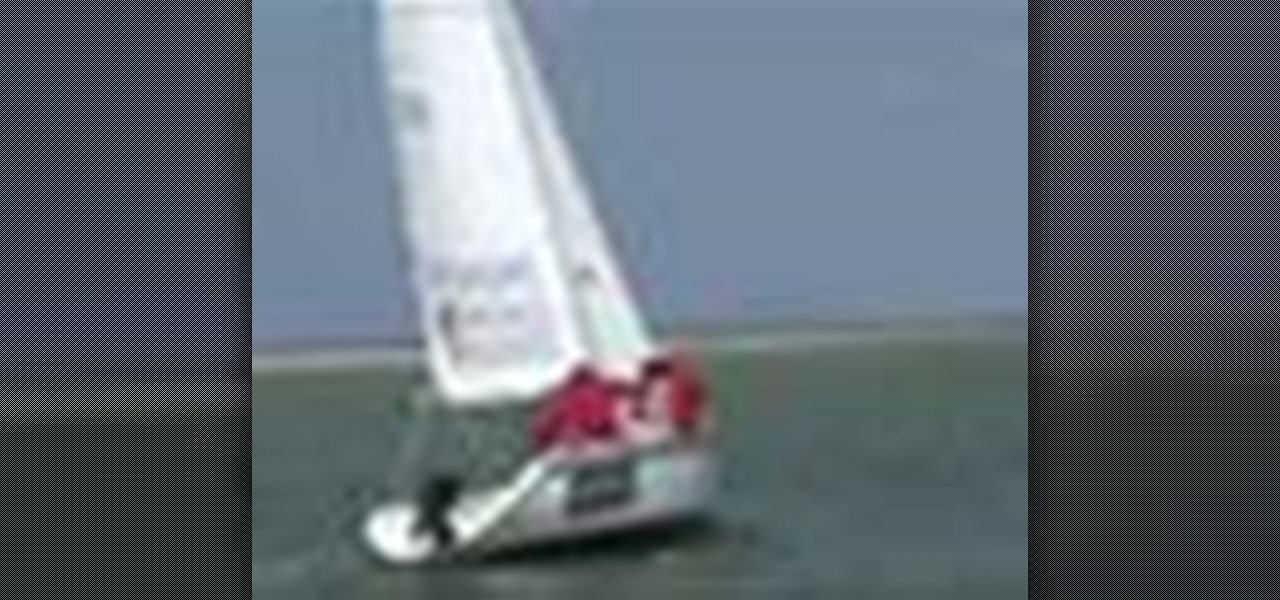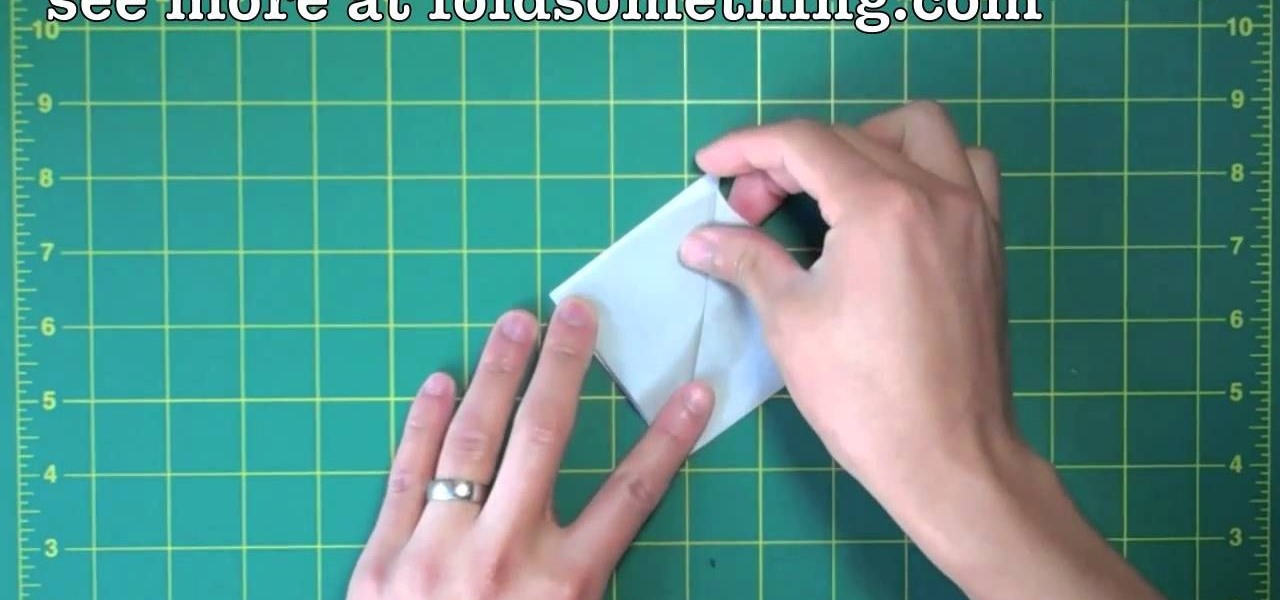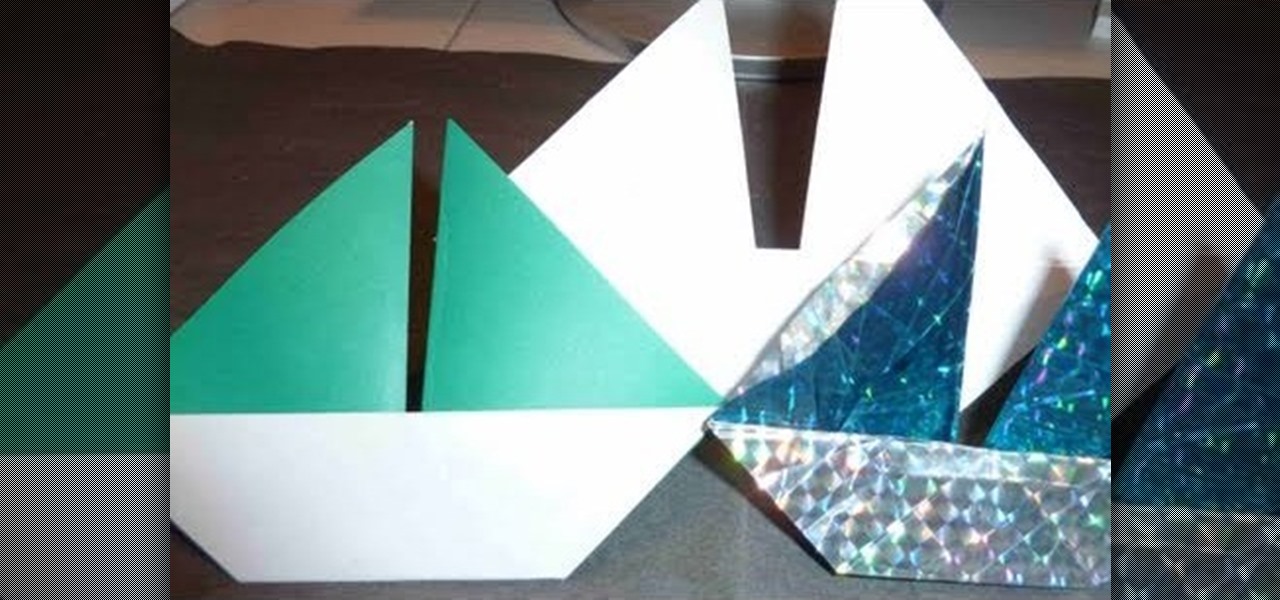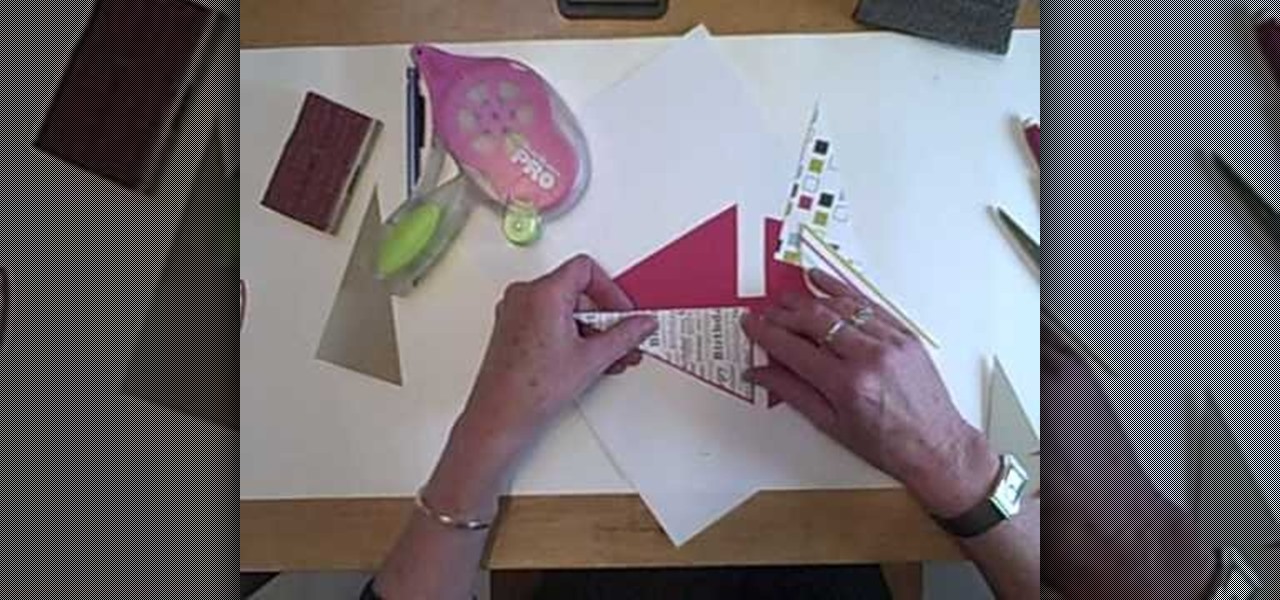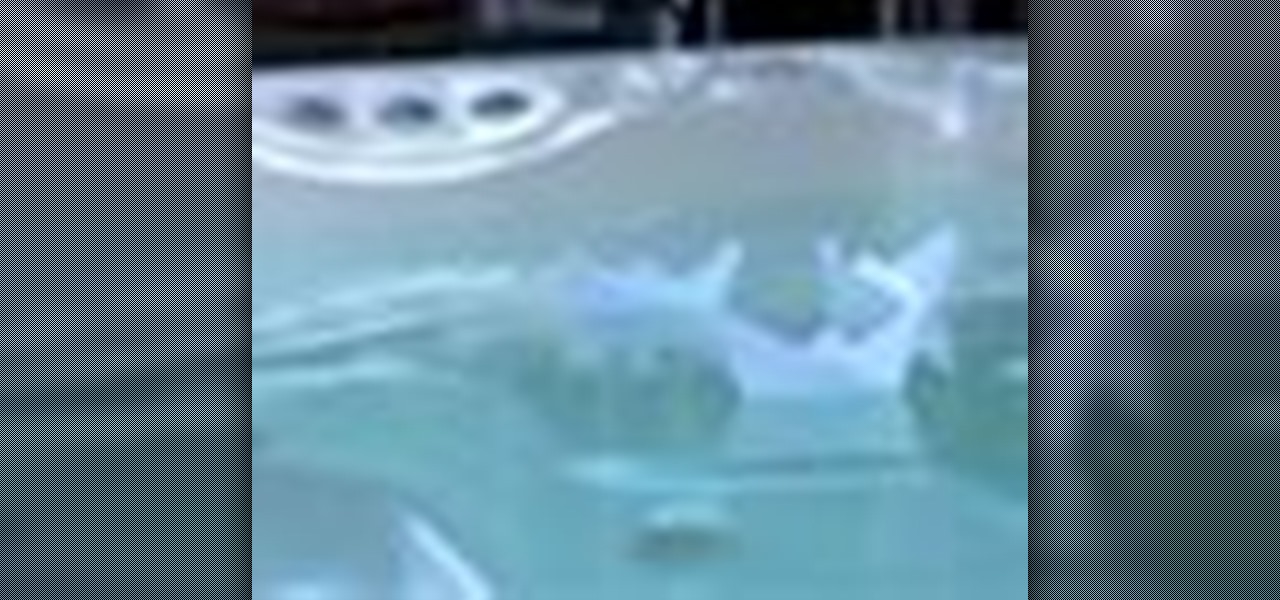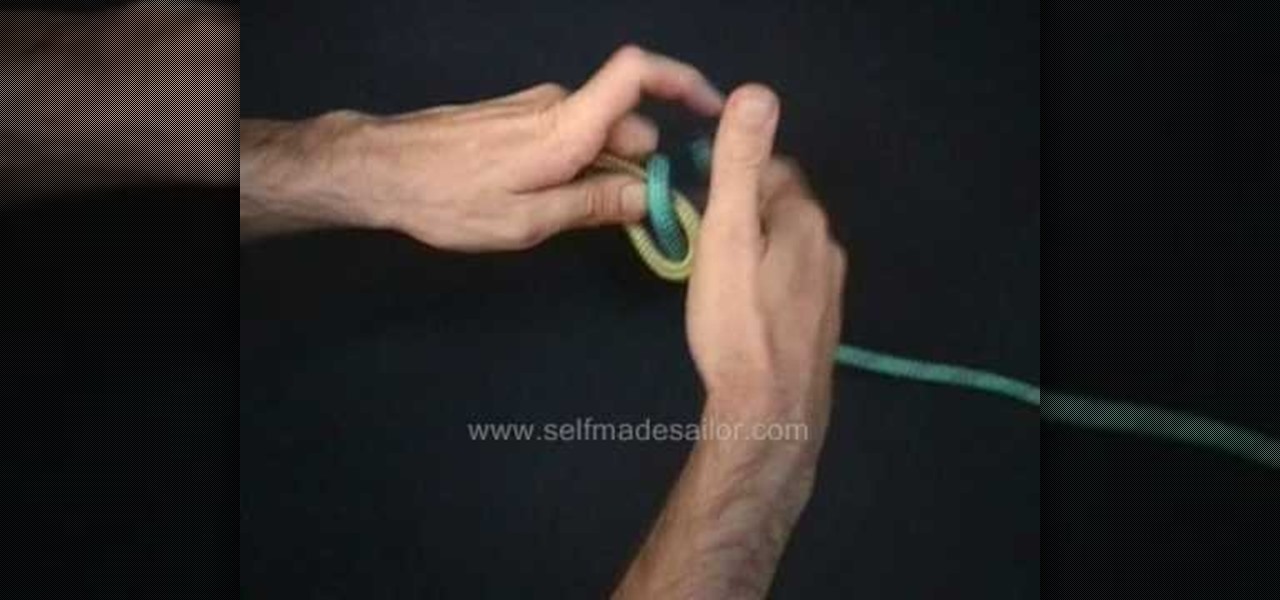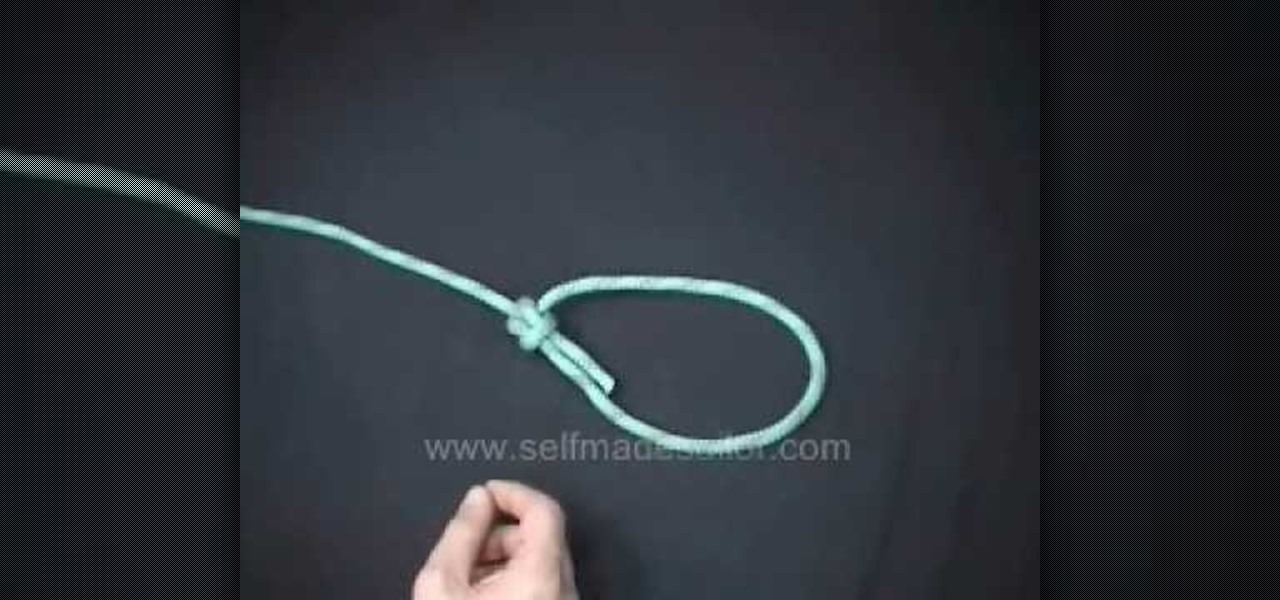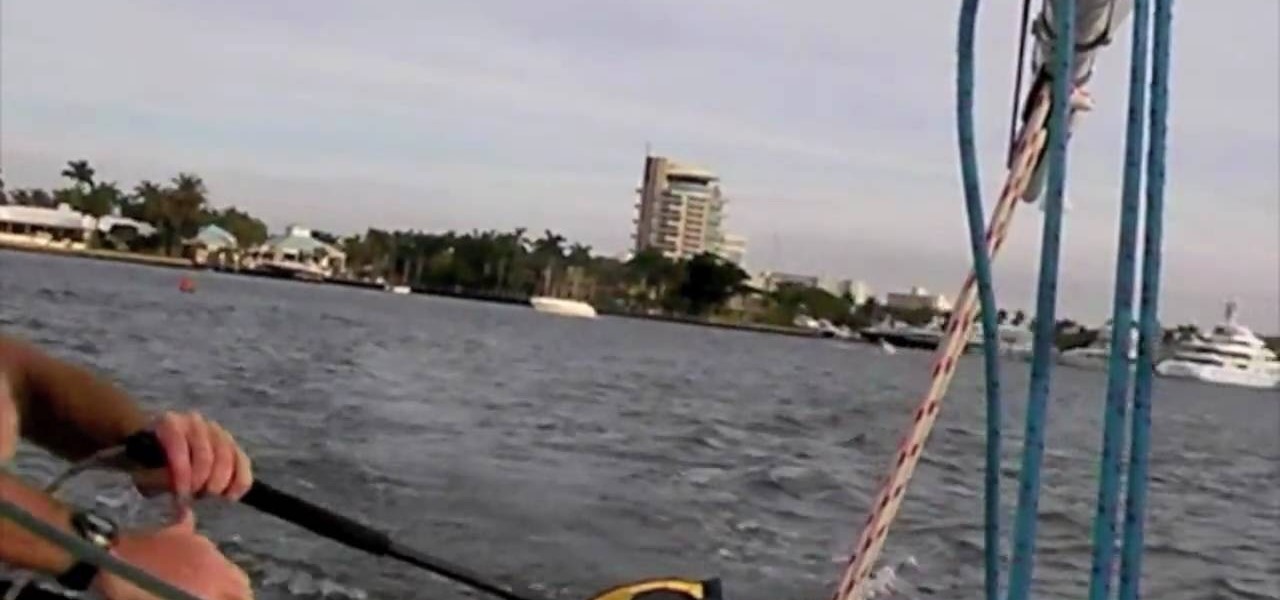
To some, sailing is more than just relaxing, it's a sport. When sailing at high speeds is races, you may find yourself in need of a way to get through a tack quickly. Being able to tack in sailing is good, but you need to perfect this into a roll tack. This allows you to turn more efficiently and with more speed. The ingredients of a good roll tack are a little hard to find. In this video, you'll learn the more straight forward things you can do to improve your roll tack.
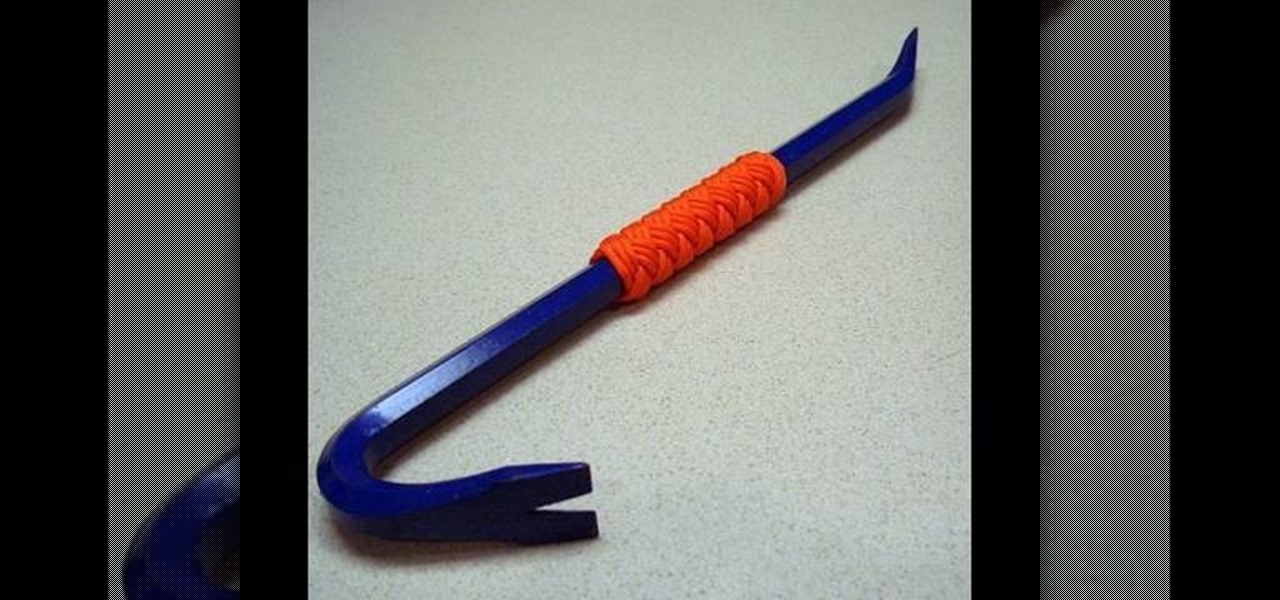
This how to video tutorial demonstrates how to tie a Turk's knot for sailing. Follow along with the step by step process and the directions below to learn how to tie the Turk's knot.

This is a home grown variant of the bowline, also useful for sailing. The bowline is tied in the standard manner in the bight of the rope. The running end is passed below the knot and follows the turn back around through the locking bend. The exiting loop can be used for lifting or for tensioning the line to tie down deck cargo. Check out this video sailing tutorial and learn how to tie a variation of the bowline knot.

The method demonstrated in this how-to video makes the Bowline knot quick and easy to tie. It is useful when you expect a blow and need to take a few turns around your winch to use as an additional hardpoint. In this case I am simulating a mast winch but the process can be used on a horizontally mounted winch as well. The secret is to form the bowline eye by capsizing an overhand knot. With the standing part in your left hand form a turn around the winch from top to bottom then cross the runn...

An aft spring line can be useful for a number of reasons in sailing. It runs from the bow of the boat backwards to a point on the pier. If there's a boat behind you, the aft spring line will be needed. Take a look at this instructional video and learn how to use this line in sailing.
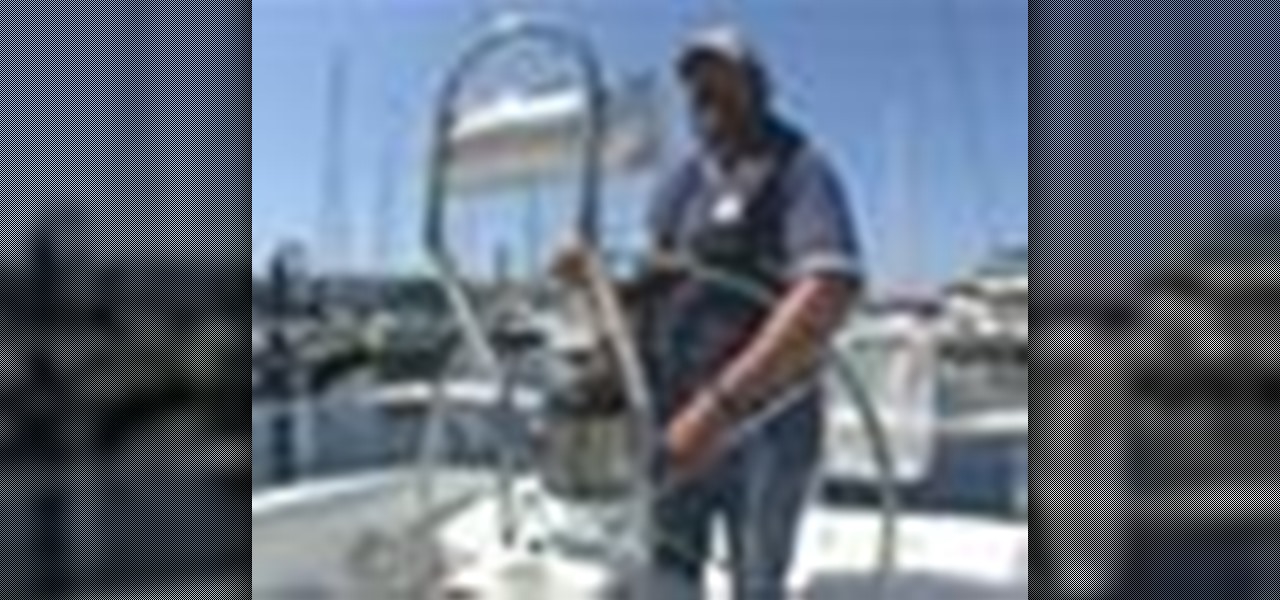
Take a look at this instructional video and learn how to pivot turn in sailing. Simply put the rudder hard over to the right and leave it there. Then let the momentum of the boat carry you.

In sailing, the term "heave to" means slowing down the boat's progression in such a way that the boat doesn't need to be steered directly. Take a look at this instructional video and learn how to heave to in sailing. To do this, the rudder will need to be turned so it's forcing the bow into the wind. The rudder and the jib counteract one another in the process, and the boat ends up stalling.

Take a look at this instructional video and learn how to perform the "back and fill" maneuver, also known as the pivot turn in sailing. This maneuver allows a boat to rotate into a tight channel, an extremely useful technique to know how to do.

This video talks about the principles of heaving to, which is nothing more than stopping your boat in the water with the sails fully up, without making the boat create much forward motion. There are multiple reasons why you would want to heave to, and one is when the seas are getting rougher and the winds are becoming too strong to safely continue sailing. Watch to learn more about these situations and to see diagrams of everything.

A quick-stop-rescue is harder for a beginner to perform. But allows the sailboat to stay closer to the COB. It is also easier to keep site of the COB during the maneuver. Shown in the picture is the a final approach to the COB on a close reach. (Whether one approaches an COB on a close reach or in-irons will depend on your boat's maneuverability, position after your jibe, wind and sea conditions and helmsman's ability.) Quick stop when a victim is in the water while sailing.

In a jibe, the the stern of the boat is passed through the wind. both the mainsail and the jib have to be adjusted. Ideally, this maneuver is performed by three sailors, a helmsman and one working each sail. The mainsail is first centered at the beginning of the turn. As the stern passes through the wind, the mainsail is let out. The jib is adjusted by taking the sail's working sheet off the leeward winch and placing the new working sheet on the opposite winch, trimming the sail. Gybe or jibe...

#1. Helmsman: "Get ready to gybe" The crew checks the sheets, secures the new working jib sheet and maintains tension on but uncleats the current working sheet. #2: Crew: "Ready".

This video shows roller furling of a jib in 5 knots of wind. Mild tensing is kept on the jib's sheet to enable the jib to warp tightly around the headstay. In high wind conditions, this is best done in a deep running reach. The mainsail will tend to shield the jib from the wind. This will prevent excess luffing of the sail and make furling easier. In a pinch, you can always let the jib out, by loosening it's sheet and roll in the jib, but in high winds excess luffing may occur and this can da...

Taking down the mainsail is also called flaking the mainsail over the boom. The mainsail is lowered and laid side to side over the top of the boom. Sail ties are then placed to secure the sail. The sailboat should be pointed into the wind or the mainsail will be blown off the boom. If there is significant wind, the mainsail's sheet should be loosened and the mainsail doused. It can then be flaked once the sailboat is at anchor or docked at port. Flake the mainsail when sailing.

A forward spring line is placed from the stern of the sailboat to the dock. In reverse gear, the sailboat is slowly backed. The spring line prevents the backward motion of the boat and swings the bow away from the dock. One may also use the rudder to vary the direction of boat thrust, to aid in holding the boat to or in swinging the boat away from the pier. Once clear, the line is released and the boat is placed in forward gear and steered away from the dock. This video shows a US SAILING Bas...

As you coil a rope, place a slight twist in the line to flatten the coils. Near the end of the line, wrap the line three times or more around the coils. Form a loop in the end of the line and pass it between the coils. Now you can either pass the end of the line through the loop to allow the coiled line to be hung for storage or pass the loop over the top of the coil to allow the coiled line to be stored in a compartment. Coil a line in sailing.

This video demonstrates how to create a sailing paper ship. Starting with a square piece of paper, the creator shows fold by fold how to make a ship that includes rudders. The final scene is to place the paper ship into some water and let it float!

Columbus Day celebrates Christopher Columbus's voyage to the Americas in 1492. In most of the New World, it's celebrated on the 12th of October, the day Columbus actually discovered the Bahamas. But in the United States, the holiday is observed on the second Monday in October.

Learn how to sail with this training video geared to young sailors. In 10 minutes you will have a great idea of how to start. The video uses voice-over and visual overlays to make it easy to learn how to sail.

Learning how to sail isn't hard if you're near water, since chances are there will be a sailing school near you. Learn different components of a sail boat, how to raise a sail, and even how to sail against the wind with tips from this how-to video.

Heres a quick guide on tacking and gybing. This video helps you learn how to perfect your technique.

Here is a step-by-step guide on how to spring of in a sailboat

Sailmaking is the skill of designing, cutting, and trimming ship sails. Get expert tips and advice on canvas and sailing terminology in this free video.

Learn how to sail, how to read charts and more with expert boating tips in this free video series on sailing.

Heres a video that gives help and tips on how to sail a sunfish during a real race.

Today, sailing is usually done for leisure or pleasure rather than traveling or moving cargo. While shipping is still the most viable way of moving goods overseas, with the advent of the airplane, sailing has transformed from a necessity to a sport. Some people put their sailing skills to the test in sailboat races; some just find it exciting to be riding the ocean waves on a non-motored vehicle, using techniques which sailors have employed for thousands of years.

Sailing is a popular pastime in the coastal areas around the world. It is a skillful hobby where a person controls the motion of a sailboat in a race, on a cruise, or on a day sailing course. Maneuvering the sailboat can be tricky and movement is controlled by arranging sails to catch the force of the wind and using that to guide the boat. Basic sail techniques include steering and turning, running, reaching, sailing upwind, reducing sail, sail trimming, hull trimming, and heeling. Familiariz...

Sailing is a popular pastime in the coastal areas around the world. It is a skillful hobby where a person controls the motion of a sailboat in a race, on a cruise, or on a day sailing course. Maneuvering the sailboat can be tricky and movement is controlled by arranging sails to catch the force of the wind and using that to guide the boat. Basic sail techniques include steering and turning, running, reaching, sailing upwind, reducing sail, sail trimming, hull trimming, and heeling. Familiariz...

Certified captain Ches Rainier shows us how to clean a sailboat. Part 1 of 15 - How to Clean a sailboat.

Land ho! Well matey, time to fold yourself a vessel and head out on the seven seas! This cleaver little video shows how to fold a spiffy little origami sailboat. Clear and easy instructions show you where to bend that paper so you'll be ready get sailing today!

Is your dad's favorite pastime taking his boat out from the dock at Marina del Ray and just sailing into the sunset, staying out on the broad ocean for hours at a time? Then he will most definitely dig your gift for him this Father's Day when you create these adorable origami sailboats.

You can easily create a fun birthday sailboat card with just a mere template. Watch how to make this awesome sailing card from HeroArts. This tutorial will take you step-by-step along the way, showing you how to stencil, cut and fold the paper.

This is a kitewing sailing complete instructional video. This kite is set up to fly on snow and ice. Kites can be used to kite surf, windsurf, and kiteboard on sand, dirt or water. This is not a standard kite like that in windsurfing or kiteboarding, but closer to the hang gliding style.

This two part tutorial shows you how to retouch a sailing photo in Photoshop. Part 1 of 2 - How to Retouch a sailboat photo in Photoshop.

A Norwegian shipping company says it will launch an unmanned container ship within four years, as the shipping industry begins to apply driverless technology to commercial sea transportation.

Folding paper into shapes is fun. Folding paper into a toy that you an actually use is even better! Making a paper boat is not only a great rainy day activity but works just as well on a beautiful summer's day.

This how to video will give you ideas on how to make a sandwich that looks like a sailboat. Preparing this sailboat sandwich is a fun activity to do with kids. Watch and learn how it done.

This video describes how to tie a bowline knot in a few easy steps. To start, take a loose piece of rope in your right hand and make a loop about a foot away from the end. Then, take the loose end, bring it up through the loop you just made. Immediately after, wrap the loose end around the rest of the rope, and then bring it back through the loop and pull tight. Think of the loose end as a "bunny." Bring the bunny out of the hole, around the tree, and then back through the hole. Once you pull...

Need to know how to tie a Double Sheet Bend? This is a more secure version of the standard sheet bend, and an excellent way of joining two ropes of equal or different diameter. He's using flex rope, but it's a generally good way of securing two lines together.

Need to know how to tie a Bowline with a few ways of securing it? This way shows you how to secure it with a seizing so that it won't accidentally come undone. Included is a little variation of the bowline with a built-in seizing. If you don't have electrical tape to secure the bowline feed the bitter end back through the hole. It also makes it so you don't have a tail line dangling if you're towing something.








